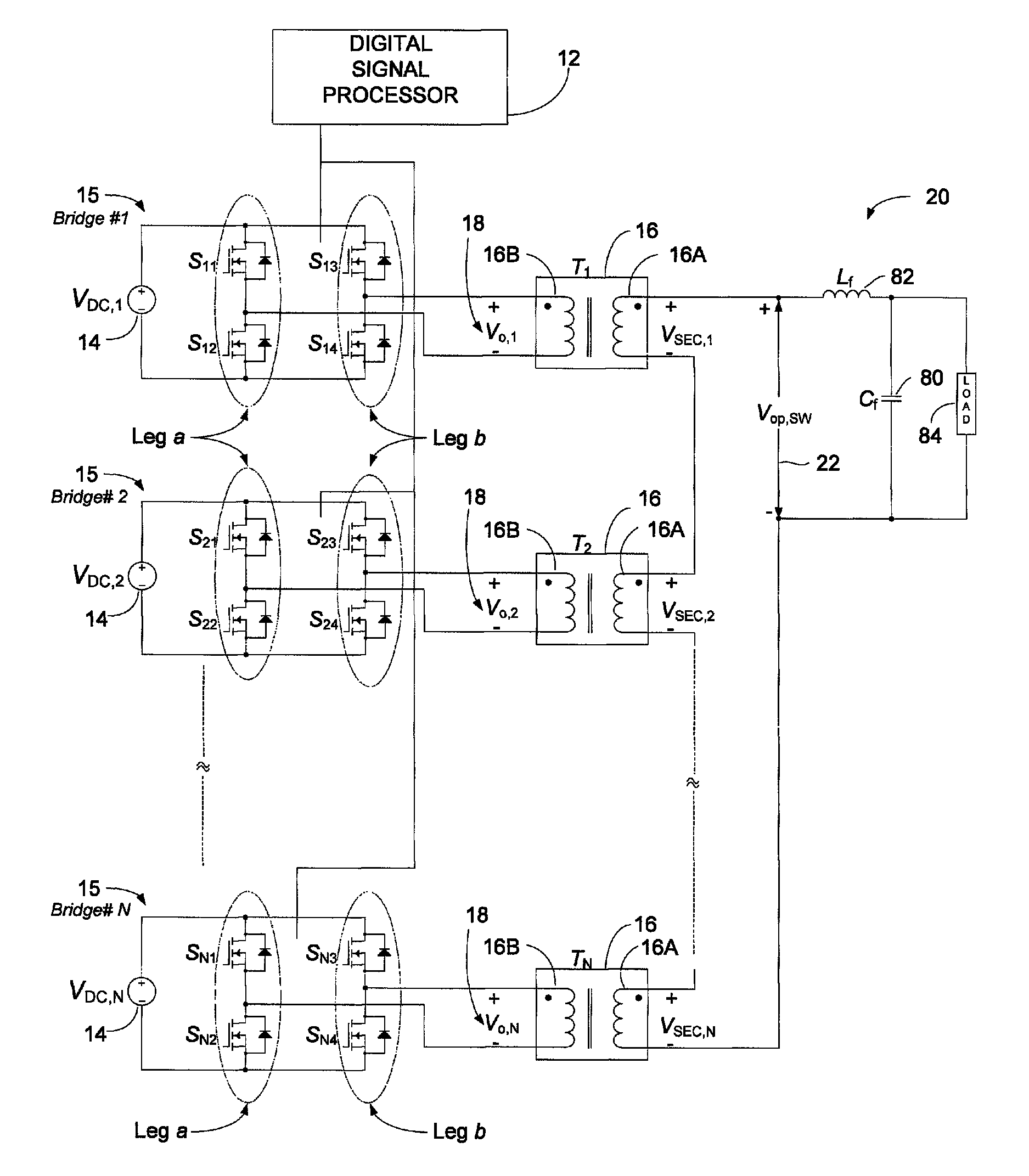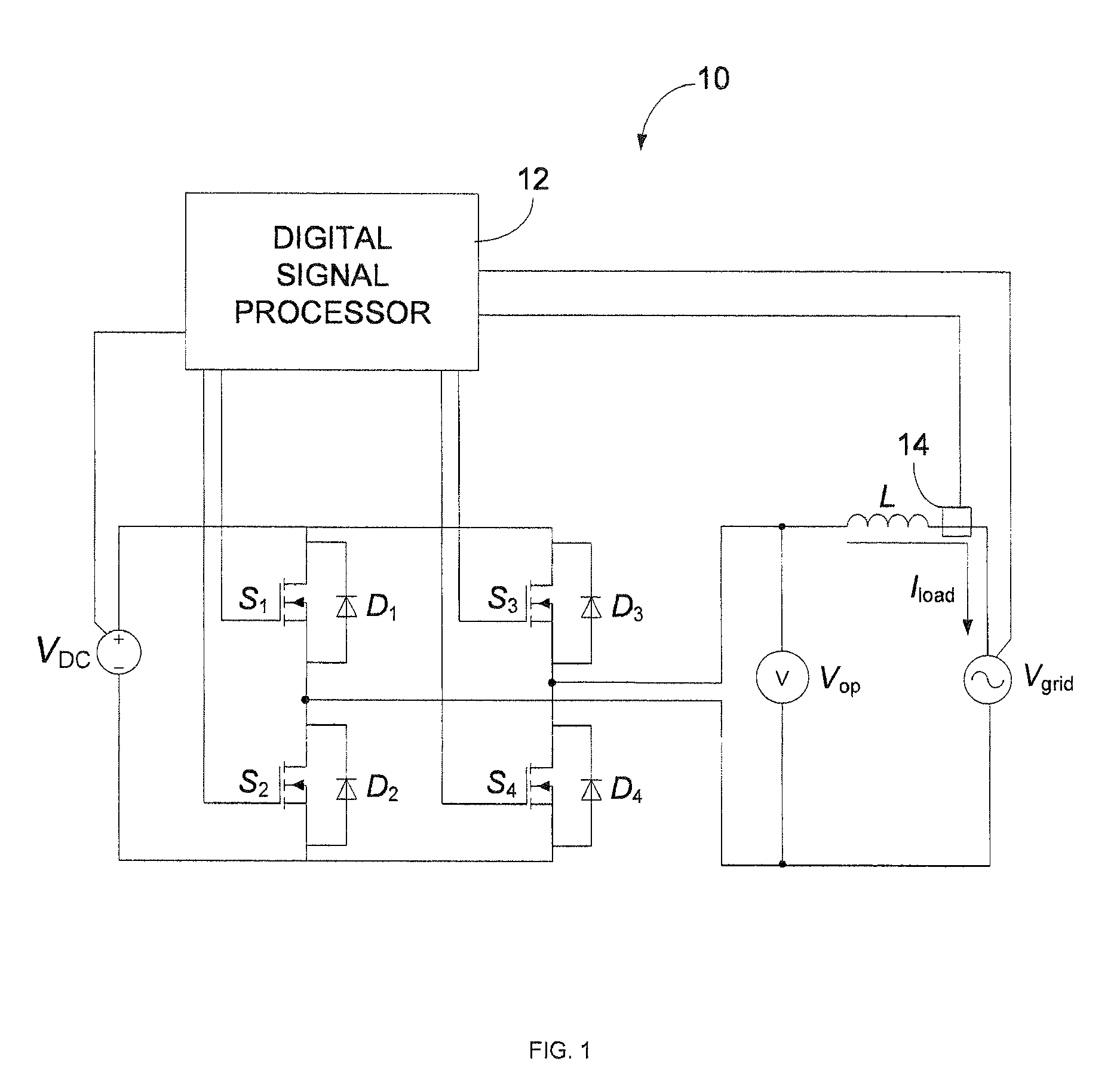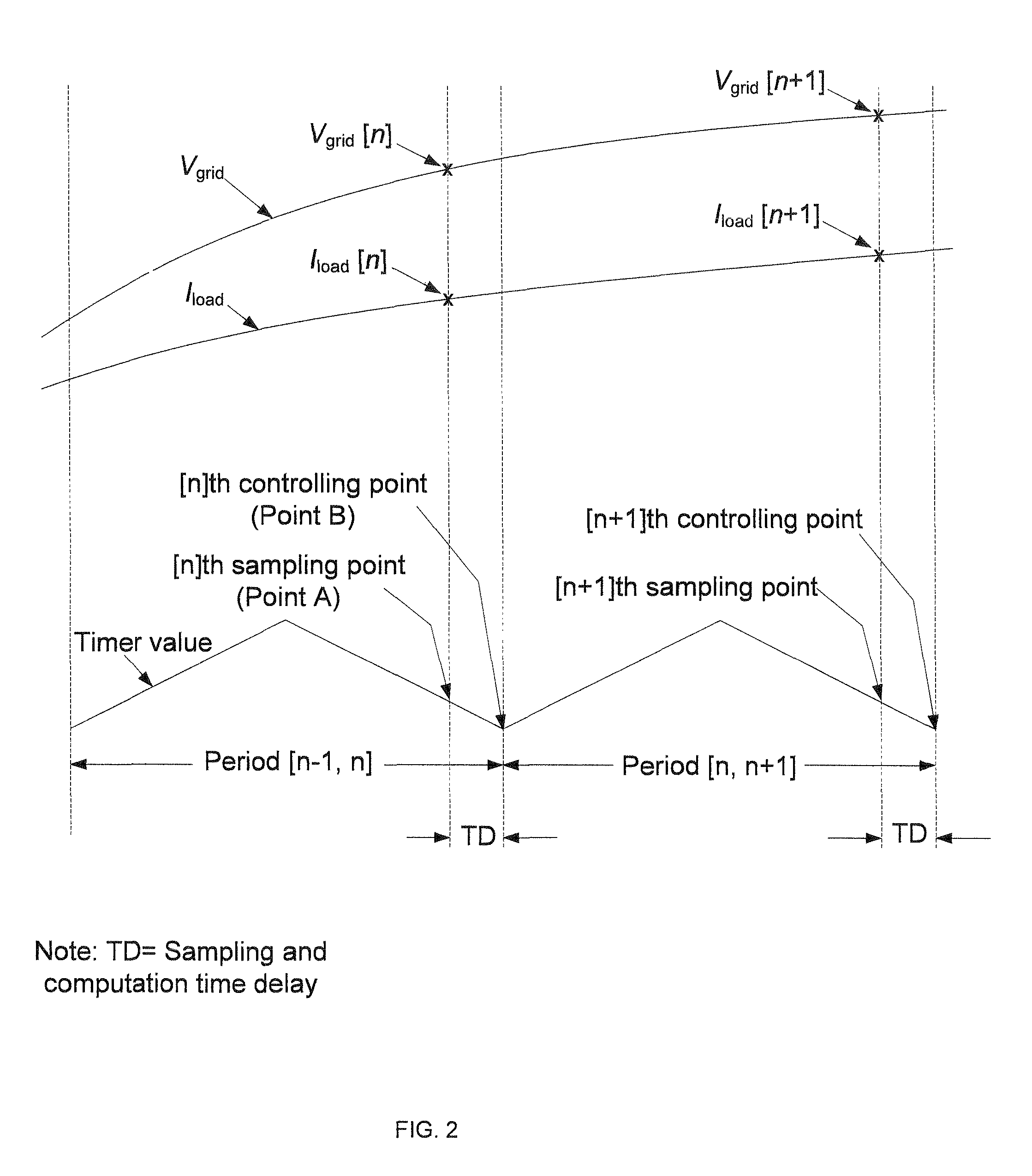Prediction scheme for step wave power converter and inductive inverter topology
a technology of inductive inverter and prediction scheme, which is applied in the direction of ac-dc conversion, electric variable regulation, instruments, etc., can solve the problems of increasing the bulkiness of the step wave power converter, affecting the output and affecting the efficiency of the step wave a
- Summary
- Abstract
- Description
- Claims
- Application Information
AI Technical Summary
Problems solved by technology
Method used
Image
Examples
Embodiment Construction
Current-Controlled Pulse Width Modulation (PWM) Scheme for Multilevel Grid-Tied Inverters
A novel current-control prediction scheme operates with multilevel grid-tied inverters. The prediction scheme can be used with any multilevel inverter topology which employs H-bridges where the outputs of multiple bridges are combined to obtain a multilevel output waveform. For instance, the prediction scheme can be used with a cascaded multilevel voltage-source inverter, and can also be used with inverters where the outputs of full-bridges, though isolated from each other, are combined through transformers. Specifically, the current-control prediction scheme can be implemented using the Step Wave Power Converter topologies described in U.S. Pat. No. 6,198,178, issued Mar. 6, 2001 which is herein incorporated by reference in its entirety.
Since-Phase Full-Bridge Voltage Source Inverter
FIG. 1 shows a single-phase full-bridge inverter 10. Two pairs of transistor switches S1 / S2 and S3 / S4 are each co...
PUM
 Login to View More
Login to View More Abstract
Description
Claims
Application Information
 Login to View More
Login to View More - R&D
- Intellectual Property
- Life Sciences
- Materials
- Tech Scout
- Unparalleled Data Quality
- Higher Quality Content
- 60% Fewer Hallucinations
Browse by: Latest US Patents, China's latest patents, Technical Efficacy Thesaurus, Application Domain, Technology Topic, Popular Technical Reports.
© 2025 PatSnap. All rights reserved.Legal|Privacy policy|Modern Slavery Act Transparency Statement|Sitemap|About US| Contact US: help@patsnap.com



